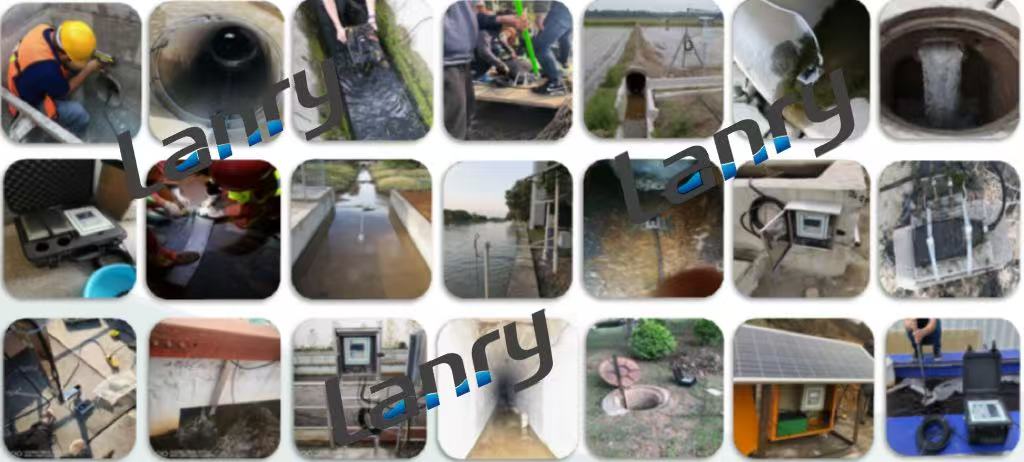Introduction
Open - channel flow meters are crucial instruments for measuring the flow rate of fluids in open - air channels such as rivers, canals, and industrial wastewater drains. Their characteristics are tailored to meet the specific requirements of these open - system applications, playing a vital role in various fields like water resource management, environmental monitoring, and industrial process control.
1. Versatility in Channel Geometries
One of the prominent features of open - channel flow meters is their adaptability to different channel shapes and sizes. They can be effectively used in rectangular canals commonly found in irrigation systems, trapezoidal - cross - section natural rivers, and even circular - shaped stormwater drains. Specialized flow meters, such as those based on weirs and flumes, are designed to work with specific geometric configurations. For example, a rectangular weir is well - suited for channels with a rectangular cross - section, while a Parshall flume can be customized to fit different trapezoidal or rectangular channels. This versatility allows for widespread application across diverse open - channel infrastructure.
2. Non - Intrusive Measurement Options
Many open - channel flow meters offer non - intrusive measurement methods, which is a significant advantage. Ultrasonic open - channel flow meters, for instance, can be installed above the water surface or on the sides of the channel. They use sound waves to measure the water depth and, in some cases, the velocity of the flow. This non - intrusive approach means that the meter does not disrupt the natural flow of the fluid. It reduces the risk of damage to the meter from the flowing water, especially in channels with high - velocity flows or those carrying debris. Additionally, non - intrusive installation is often quicker and more cost - effective, as it does not require shutting down the flow or making significant modifications to the channel.
3. High Accuracy in Varied Conditions
Open - channel flow meters are designed to provide accurate measurements even in challenging conditions. In rivers, where the flow rate can vary significantly due to rainfall, snowmelt, or upstream dam releases, electromagnetic open - channel flow meters can accurately measure the velocity of the conductive water. By applying Faraday's law of electromagnetic induction, these meters can account for changes in flow velocity and cross - sectional area, resulting in reliable flow rate calculations. In industrial wastewater channels, where the fluid may contain suspended solids or have variable chemical compositions, Doppler - based ultrasonic flow meters can measure the flow velocity by detecting the frequency shift of ultrasonic waves reflected from suspended particles. This enables accurate flow measurement despite the complex nature of the fluid.
4. Real - Time and Continuous Monitoring
Most modern open - channel flow meters are capable of real - time and continuous monitoring. They are often equipped with sensors and data - logging devices that can transmit flow rate data at regular intervals. This is essential for applications such as flood control, where real - time data on river flow rates is crucial for predicting flood levels and issuing timely warnings. In water resource management, continuous monitoring of canal flows helps in optimizing water distribution for irrigation and other uses. The ability to provide a continuous stream of data also allows for the analysis of long - term trends in flow rates, which is valuable for environmental studies and infrastructure planning.
5. Durability and Resistance to Harsh Environments
Open - channel flow meters need to be durable as they are often exposed to harsh environmental conditions. They are built to withstand variations in temperature, humidity, and exposure to water and sunlight. For example, flow meters installed in outdoor rivers or canals may experience extreme temperature changes between seasons. Meters made with corrosion - resistant materials, such as stainless steel or certain plastics, can resist the corrosive effects of water, especially in industrial wastewater channels where the fluid may contain chemicals. Additionally, they are designed to endure the physical impact of flowing water and any debris that may be present in the channel, ensuring long - term reliable operation.
6. Cost - Effectiveness in Different Scales
Open - channel flow meters offer cost - effective solutions for flow measurement across different scales. For small - scale applications, such as measuring the flow in a backyard irrigation ditch, simple and inexpensive propeller - type flow meters can be used. These meters are easy to install and maintain, providing a cost - efficient way to measure flow rates. On a larger scale, in major river systems or large - scale industrial wastewater treatment plants, more sophisticated and expensive flow - measurement systems may be required. However, the long - term benefits of accurate flow measurement, such as improved water resource management, reduced environmental impact, and enhanced industrial process efficiency, justify the investment. The overall cost - effectiveness of open - channel flow meters lies in their ability to provide valuable data at a reasonable cost, depending on the specific application requirements.
In conclusion, open - channel flow meters possess a unique set of characteristics that make them indispensable for measuring fluid flow in open - channel systems. Their versatility, non - intrusive options, accuracy, real - time monitoring capabilities, durability, and cost - effectiveness contribute to their widespread use in various industries and environmental applications.

Post time: Mar-03-2025

